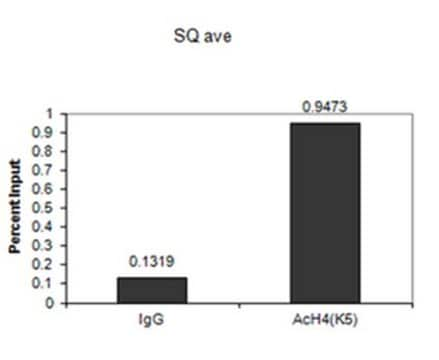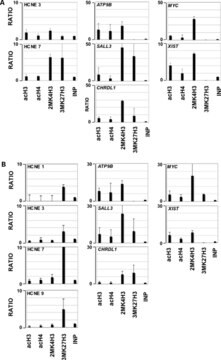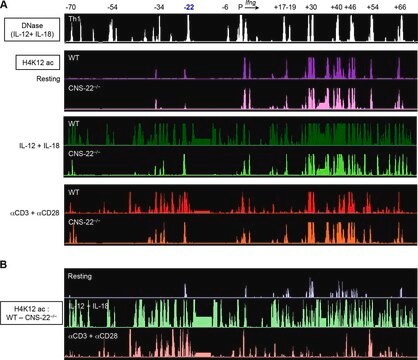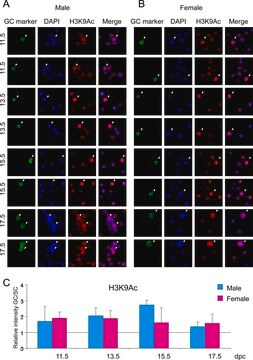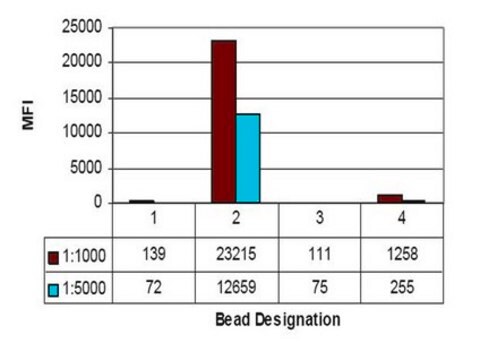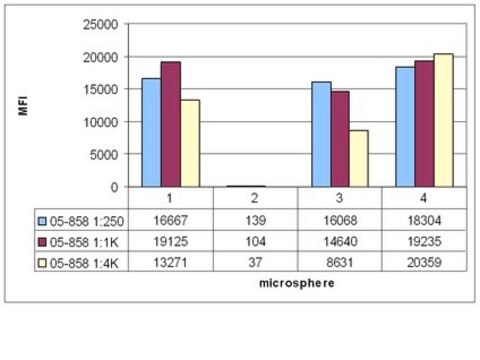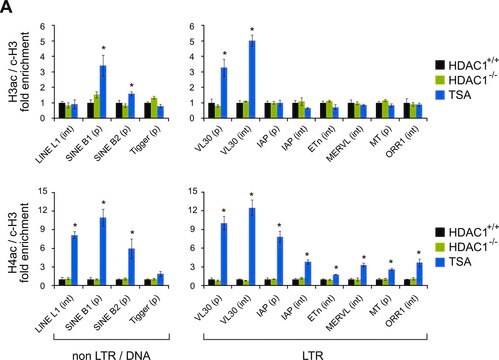07-328
Przeciwciało przeciwko acetylo-histonie H4 (Lys8)
serum, Upstate®
Synonim(y):
H4K8Ac, histon H4 (acetyl K8)
About This Item
Polecane produkty
pochodzenie biologiczne
rabbit
Poziom jakości
forma przeciwciała
serum
rodzaj przeciwciała
primary antibodies
klon
polyclonal
reaktywność gatunkowa
human, Saccharomyces cerevisiae
producent / nazwa handlowa
Upstate®
metody
ChIP: suitable (ChIP-seq)
dot blot: suitable
immunoprecipitation (IP): suitable
western blot: suitable
izotyp
IgG
numer dostępu NCBI
numer dostępu UniProt
Warunki transportu
wet ice
docelowa modyfikacja potranslacyjna
acetylation (Lys8)
informacje o genach
human ... H4C1(8359)
Opis ogólny
N-końcowy ogon histonu H4 wystaje z kulistego rdzenia nukleosomu i może podlegać kilku różnym rodzajom modyfikacji epigenetycznych, które wpływają na procesy komórkowe. Modyfikacje te obejmują kowalencyjne przyłączanie grup metylowych lub acetylowych do aminokwasów lizyny i argininy oraz fosforylację seryny lub treoniny.
Immunogen
Zastosowanie
Jakość
Opis wartości docelowych
Komentarz do analizy
Komórki HeLa traktowane maślanem sodu
Inne uwagi
Informacje prawne
Nie możesz znaleźć właściwego produktu?
Wypróbuj nasz Narzędzie selektora produktów.
Kod klasy składowania
10 - Combustible liquids
Klasa zagrożenia wodnego (WGK)
WGK 1
Temperatura zapłonu (°F)
Not applicable
Temperatura zapłonu (°C)
Not applicable
Certyfikaty analizy (CoA)
Poszukaj Certyfikaty analizy (CoA), wpisując numer partii/serii produktów. Numery serii i partii można znaleźć na etykiecie produktu po słowach „seria” lub „partia”.
Masz już ten produkt?
Dokumenty związane z niedawno zakupionymi produktami zostały zamieszczone w Bibliotece dokumentów.
Nasz zespół naukowców ma doświadczenie we wszystkich obszarach badań, w tym w naukach przyrodniczych, materiałoznawstwie, syntezie chemicznej, chromatografii, analityce i wielu innych dziedzinach.
Skontaktuj się z zespołem ds. pomocy technicznej